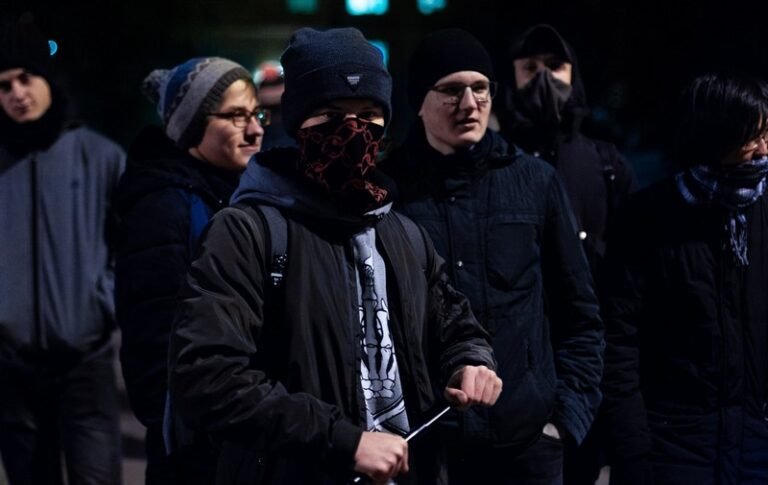Table of Contents
- Introduction
- Currie’s Market Economy Theory: An Overview
- Structural Roots of Gang Formation in Market Societies
- Territoriality, Consumption and Identity
- Comparative Evidence: Beyond the United States
- Policy Implications: Reinventing Social Protection
- Conclusion
Introduction
Elliott Currie’s Market Economy Theory emerged in the 1990s as one of the most systematic sociological accounts of why advanced capitalist societies—particularly the United States—tolerate levels of violent crime far above those of their economic peers. In a series of books and articles, Currie argued that the organisation of a market‑dominant economy in which social welfare, family stability and communal institutions are subordinated to competitive profit‑seeking places entire populations at heightened risk of violence. Nowhere is this pattern more visible than in the proliferation of youth gangs. For undergraduate students of sociology, gangs often appear as exotic subcultures; yet Currie encourages us to see them as predictable outcomes of political–economic arrangements that privilege market values over social protection.
This article introduces Currie’s Market Economy Theory, outlines its core propositions, and shows how the theory illuminates the emergence, persistence and evolution of gangs. By linking macro‑level political economy to meso‑level neighbourhood conditions and micro‑level identities, Currie offers a multi‑scalar explanation that remains compelling in the era of late neoliberalism. While the analysis centres on the United States, the framework has comparative relevance for other societies that have embraced deregulatory economic policies. The discussion concludes with policy implications for mitigating gang‑related harm. Throughout, key sociological concepts such as anomie, social disorganisation, relative deprivation and cultural capital are used to translate Currie’s ideas into the conceptual toolkit familiar to undergraduate readers.
Currie’s Market Economy Theory: An Overview
Currie’s core claim is straightforward: the more a society allows unfettered market logic to shape social life, the more it cultivates the structural preconditions of violent crime. He does not argue that markets are inherently criminogenic; rather, it is the dominance of market relationships over other institutional spheres that matters. Currie identifies seven interlocking features of a market‑centred society that together generate a distinctive “market crime nexus”.
- Destabilised labour markets erode the availability of stable, well‑paid work, especially for young and racialised men.
- Persistent economic inequality produces sharp relative deprivation and weakens social bonds across class lines.
- Eroded support systems result when welfare states are thin and patchy, magnifying the impact of poverty.
- Brutalising criminal justice strategies emphasise punitive control rather than social reintegration.
- Cultural diffusion of competitive individualism valorises aggressive self‑advancement at any cost.
- Institutionalised racism and exclusion concentrate market failures in minority communities.
- Diminished political voice leaves marginalised populations with few peaceful means to contest their circumstances.
In combination, these conditions create a “violent adaptive economy” in which communities invent shadow systems—gangs, drug markets, coercive protection rackets—to meet needs unmet by the formal economy. Currie’s framework thus bridges structural and cultural sociology by arguing that material deprivation and symbolic valuations of ruthless competitiveness reinforce each other.
Relationship to Classical Theory
Currie builds on Durkheimian notions of anomie, Merton’s strain theory and the Chicago School’s insights into social disorganisation. Like Durkheim, he sees social institutions as moral regulators; when they fail, anomie—normative deregulation—spreads. However, Currie goes further by specifying the economic mechanisms through which institutional failure occurs. His emphasis on institutionalised inequality resonates with Merton’s argument that blocked opportunities foster innovation in the form of illicit means. At the neighbourhood level, Currie aligns with Shaw and McKay in viewing concentrated poverty, residential turnover and ecological isolation as incubators of collective efficacy deficits. Yet he criticises social disorganisation theory for bracketing the national political–economic forces that place some neighbourhoods at a systemic disadvantage.
Structural Roots of Gang Formation in Market Societies
Labour‐Market Exclusion and the Rise of Informal Economies
In market‑dominated economies the supply of low‑skill, high‑wage employment contracts, particularly after deindustrialisation. For working‑class youth, especially those racialised as Black or Latino in the US, the erosion of manufacturing jobs closes a crucial mobility channel. Schooling often fails to compensate because under‑resourced public schools track these youth into low expectations. The result is a structural surplus population—employable in theory but redundant in practice.
Faced with blocked legitimate opportunity, young people reorient their economic agency towards informal and illicit markets. Gangs provide organisational infrastructure for accessing those markets, whether in drug distribution, stolen goods, cyber‑fraud or protection services. Importantly, Currie sees these choices less as deviant subcultural preferences and more as rational adaptations to economic exclusion. Thus, gangs are both economic enterprises and solidarity networks that buffer members against precarious labour markets.
Cultural Logics of Violent Entrepreneurship
Currie’s cultural argument holds that market societies glorify aggressive competition, conspicuous consumption and zero‑sum success. Success advertising and hip‑hop hyper‑capitalism transmit the message that value derives from the visible acquisition of commodities. For youth shut out of conventional ladders of success, gangs offer a stage on which performative consumerism and street capitalism become attainable. Violence, then, is not only instrumental but also expressive: it signals reputation, deters rivals and secures market share in illicit economies. The same competitive individualism celebrated on Wall Street is mirrored—through a dark lens—on the corner.
Neighbourhood Ecologies and Collective Efficacy
Building on Sampson’s collective efficacy framework, Currie argues that market forces weaken community institutions—schools, churches, recreational centres—responsible for informal social control. Budget cuts reduce after‑school programmes; housing foreclosures produce high turnover; policing strategies intensify distrust. In this context gangs substitute for fragile neighbourhood networks, offering protection, identity and informal governance. Where police legitimacy is low, gangs even provide dispute resolution and public goods (e.g., preventing burglary within their territory) in exchange for allegiance.
Territoriality, Consumption and Identity
Get the full article AD FREE. Join now for full access to all premium articles.
View Plans & Subscribe Already a member? Log in.





